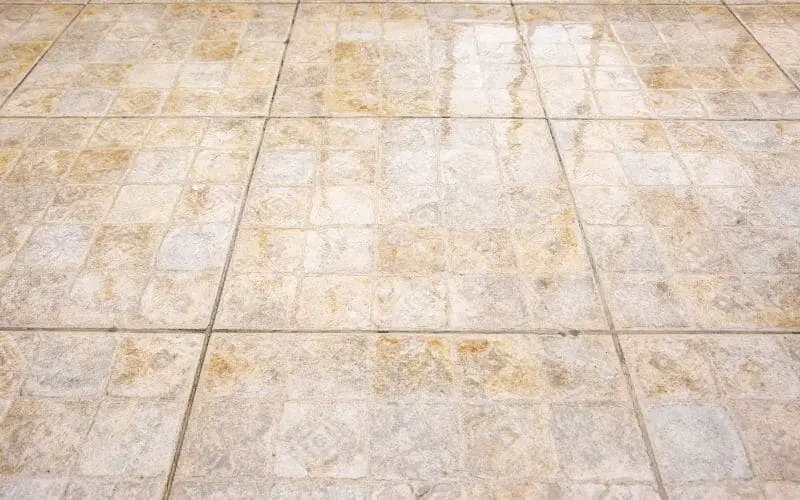Tiles are a great addition to your homes, they provide the luxury and exquisite finish to your houses. But more importantly, they’re a worthy investment, as they can lay on your floors or tabletops for ages without wearing off, which brings us to why tiles wear off!
Tiles may wear off due to their porous nature, which allows room for moisture, which is why tiles are vitrified to serve as an enhancement allowing them to withstand moisture and frost. So, what is Vitreous tile exactly then?
While you may be confused thinking Vitreous Tile is a specific type of tile variety, this isn’t necessarily the case. Vitrification refers to a specific way a tile is made.
Related: How to stop tile floor from cracking
What is Vitreous Tile?
Table of Contents
Vitreous tiles are tiles that absorb less moisture making them suitable for areas that encounter moisture more often.
Unlike natural stone travertine tiles that are used sparingly on countertops, tabletops, and outdoors, a vitrified tile is well suited for these areas due to its superior resistance to moisture.
Unlike other tile varieties, a vitrified tile features a very low porosity which absorbs less than 3% moisture when exposed.
This feature makes it far less vulnerable to moisture. In order to understand why vitrified tiles are best for moisture-prone areas, we will first of all look at their constituents.
Vitreous Tile Constituents
In order to make a hard, durable, and non-porous tile, a mixture of quartz, feldspar, silica, and clay is passed through a hydraulic press, thereby creating a compressive force that leads to a durable and non-porous tile variant.
Vitrified Tile Types
Soluble Salt
This variety of vitrified tile undergoes screen printing and is then further polished to give it the shine.
Double Charge
The double charge refers to printing a non-complex pattern through a press. This prints a double layer of pigments on the vitrified tile.
Although you may find patterns on this variety less complex and simple, that’s because the process doesn’t allow this. However, the variety is much more resistant to wears and very suitable for areas with high traffic.
Full Body
A full body vitrified tile is one that is covered in pigments. Although this may be a lot pricey, they do great in concealing scratches and tears.
Glazed
If you’re the type who loves to have a wide variety of designs to pick from, then the glazed variety should do justice. This variety features vitrified tiles with a glazed surface. However, the process is also expensive!
Related: How to keep footprint off tile floors
Features of Vitreous Tiles
Glossy And Smooth Look
If you’re a complete newbie trying out different tile varieties, you may have found that most of these tiles look quite shiny and glossy, and you may wonder “are these ceramic?
No, they’re not. Ceramic tiles lack gloss, and as such, may require constant polishing to maintain their shine.
Vitreous tiles on the other hand come pre-polished, so you won’t need to polish them often or at all. Also, vitrified tiles have a smooth, glossy finished look and feel.
Read: How to polish travertine tile
Water Impervious
If there’s one thing that puts a vitrified tile in the spotlight, it is its superior resistance to water. When water sips into a tile layer, it makes it a lot easier for moisture to get trapped, which will eventually shorten the lifespan of the tile.
A vitreous tile is glass-like and non-porous hence making it impossible for water to get in.
Read: Does steam cleaning damage tile?
It Is Resistant To Fading Even When Exposed To Sunlight
Unlike ceramics made of earthen clay, vitrified tiles are made of silica, feldspar, and quartz, which are heated to give it that glass look and feel.
When exposed to sunlight, a ceramic tile will fade off over time, but a vitrified tile will remain very much the same, which makes it more suitable for outdoor flooring and areas exposed to UV rays.
Read: How to make porcelain tiles shine
Easy To Maintain
Most homeowners will pick certain tiling options because they’re easier to clean amidst being less popular. This is because a tile that is easier to clean will pose less stress when cleaning and cost less should it require a repair or replacement.
Tiles often get caught up with stains and messes such as oil, and you may find it difficult to clean an oil stain off a ceramic tile due to its porous nature. But with vitrified tiles, the case is different.
Due to its smooth feature, cleaning vitreous tile is a lot easier compared to ceramic tiles. They’re non-porous, thereby making any liquid that comes in contact with it to remain on the surface, which can easily be wiped off.
Read: How to mop tile floors without streaks
Durable
Put through the test, a vitrified tile is very much stronger and less brittle compared to many tiling options. With a 10-22 mm thickness, a vitrified tile is very much rooted to lay on your floor for ages without having any hitch.
Easy To Install
Asides from being durable and a lot easier to maintain, a vitrified tile is quite easy to install.
Related: Porcelain tile vs Travertine tile
Conclusion
Vitreous tiles are quite the trend in homes these days. A great alternative to marble, vitrified tiles offers a lot more mechanical strength and durability while boasting a superior resistance to frost and water.
If you require a tile that will do well outdoors and in water-prone areas, then vitrified tiles should be just the flooring your need.
Know that you know, what is vitreous tiles, you can now make a better decision when choosing a new flooring

